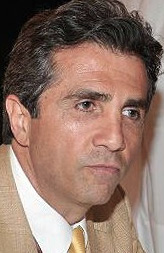

 If you're interested in learning more about Internationalized Domain Names (IDNs), UNESCO and EURid recently released a report on the evolution and challenges of IDNs. It's a good read and it highlights some of the struggles that countries and registries face and taking IDNs mainstream. Though Russia has so far proven to be a major success story - with more than 800,000 IDN registrations so far (and counting) - most other IDNs are have a long ways to go yet.
If you're interested in learning more about Internationalized Domain Names (IDNs), UNESCO and EURid recently released a report on the evolution and challenges of IDNs. It's a good read and it highlights some of the struggles that countries and registries face and taking IDNs mainstream. Though Russia has so far proven to be a major success story - with more than 800,000 IDN registrations so far (and counting) - most other IDNs are have a long ways to go yet.
 This past May 19th, 5 years after its sunrise, puntCAT arrived at the 50,000 domain names landmark. We know that, nowadays, 50,000 domain names may hardly be described as shocking news, and, certainly, this is not our limit, and we believe there's still plenty of room for .cat to grow. Then, who and why should care about this number?
This past May 19th, 5 years after its sunrise, puntCAT arrived at the 50,000 domain names landmark. We know that, nowadays, 50,000 domain names may hardly be described as shocking news, and, certainly, this is not our limit, and we believe there's still plenty of room for .cat to grow. Then, who and why should care about this number?
 A couple of weeks ago during the 40th ICANN meeting in San Francisco I got up to talk at the microphone. I spoke about the needs of developing markets on the web, about the importance of focusing on the 56% of the world that doesn't use Latin character scripts and about the struggles they still face as they go about their everyday lives - chatting, shopping or when pushed, promoting regime change - all using the internet...
A couple of weeks ago during the 40th ICANN meeting in San Francisco I got up to talk at the microphone. I spoke about the needs of developing markets on the web, about the importance of focusing on the 56% of the world that doesn't use Latin character scripts and about the struggles they still face as they go about their everyday lives - chatting, shopping or when pushed, promoting regime change - all using the internet...
 Good news. In now my 15th ICANN meeting or so it's clear that the internet governance community is finally taking some real note of the rest of the world -- including the over 50% of humankind that doesn't use Latin script characters to communicate. In fact, talk of emerging markets is everywhere at the San Francisco ICANN meeting this week. The ICANN Board and Government Advisory Committee (or GAC, a group of government representatives that advise the Board) are talking about the needs of developing countries.
Good news. In now my 15th ICANN meeting or so it's clear that the internet governance community is finally taking some real note of the rest of the world -- including the over 50% of humankind that doesn't use Latin script characters to communicate. In fact, talk of emerging markets is everywhere at the San Francisco ICANN meeting this week. The ICANN Board and Government Advisory Committee (or GAC, a group of government representatives that advise the Board) are talking about the needs of developing countries.
 The primary focus of this article is to illustrate that the Applicant Guidebook is not supplying sufficient protection mechanisms, and creates too high financial barrier for those who are interested in applying for multiple Top-Level Domains (TLDs) that are translations/transliterations of each other and/or of an existing generic Top-Level Domains (tt-gTLDs).
The primary focus of this article is to illustrate that the Applicant Guidebook is not supplying sufficient protection mechanisms, and creates too high financial barrier for those who are interested in applying for multiple Top-Level Domains (TLDs) that are translations/transliterations of each other and/or of an existing generic Top-Level Domains (tt-gTLDs).
 Will current failed ICANN direction on the New generic Top-Level Domains (gTLDs) doom its Regime to follow the fate of Mubarak, Ben Ali, and soon Kaddafi's? The whirlwinds of change we all have witnessed that started blowing in Tunisia, moved to Egypt and is now engulfing Libya, Yemen, Jordan and soon many others, have signaled a revolutionary way of thinking not just at local or regional levels but I believe on global levels too.
Will current failed ICANN direction on the New generic Top-Level Domains (gTLDs) doom its Regime to follow the fate of Mubarak, Ben Ali, and soon Kaddafi's? The whirlwinds of change we all have witnessed that started blowing in Tunisia, moved to Egypt and is now engulfing Libya, Yemen, Jordan and soon many others, have signaled a revolutionary way of thinking not just at local or regional levels but I believe on global levels too.
 Many of us were expecting radical changes in 2010 to the domain name market. There definitely were some of those -- just not the ones I expected. From the seizure of domains names by the US Government to ICANN's removal of restrictions on Registry/Registrar cross-ownership, 2010 was a year full of surprises. In this post, I've compiled what I think were the biggest domain name stories in 2010.
Many of us were expecting radical changes in 2010 to the domain name market. There definitely were some of those -- just not the ones I expected. From the seizure of domains names by the US Government to ICANN's removal of restrictions on Registry/Registrar cross-ownership, 2010 was a year full of surprises. In this post, I've compiled what I think were the biggest domain name stories in 2010.
 The proposed final Guidebook for the New generic Top-Level Domains (gTLDs) and Internationalized Domain Name (IDN) gTLDs contains elements that raise grave risks to the ICANN single root of the Internet caused by none other than ICANN itself. Below is my intervention at the ICANN Cartagena Public Forum today. ICANN President and CEO Mr. Rod Beckstrom was prompt to reply and acknowledge the validity of my statement adding that ICANN is fully aware of the problem.
The proposed final Guidebook for the New generic Top-Level Domains (gTLDs) and Internationalized Domain Name (IDN) gTLDs contains elements that raise grave risks to the ICANN single root of the Internet caused by none other than ICANN itself. Below is my intervention at the ICANN Cartagena Public Forum today. ICANN President and CEO Mr. Rod Beckstrom was prompt to reply and acknowledge the validity of my statement adding that ICANN is fully aware of the problem.
Bulgaria has proposed for an Internationalized Domain Name (IDN) ccTLD string .?? (Cyrillic for .bg, or U+0431 U+0433), but the proposal was turned down by the ICANN DNS Stability panel in May 2010 without any arguments or an option for appeal. The proposed string is composed of two characters...
 This visual depicts about half of the currently approved internationalized domain names (IDNs), positioned over their respective regions. Notice the wide range of scripts over India and the wide range of Arabic domains. I left off the Latin country code equivalents (in, cn, th, sa, etc.) to illustrate what the Internet is going to look like (at a very high level) in the years ahead.
This visual depicts about half of the currently approved internationalized domain names (IDNs), positioned over their respective regions. Notice the wide range of scripts over India and the wide range of Arabic domains. I left off the Latin country code equivalents (in, cn, th, sa, etc.) to illustrate what the Internet is going to look like (at a very high level) in the years ahead.